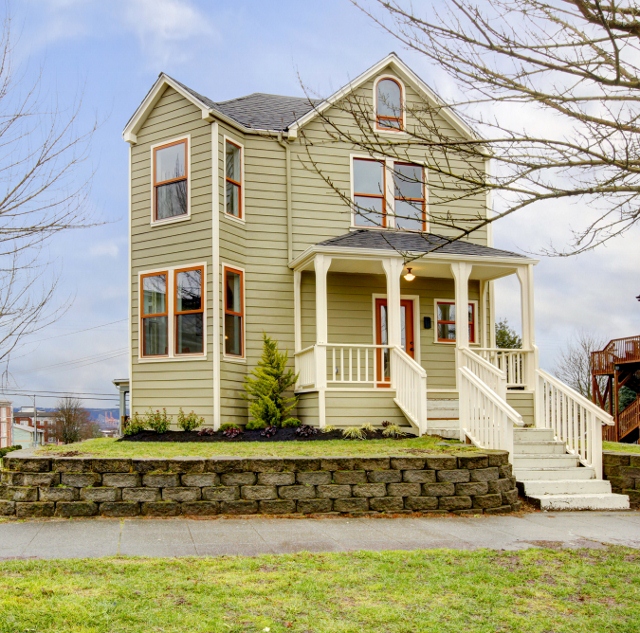As a commissioner for the City of Tacoma's Landmarks Preservation Commission and a former board member of Historic Tacoma, I've had a lot of experience with historic properties. I've also been buying, renovating and selling historic homes myself for more than twenty years (45 houses and counting). Not surprisingly, clients often seek my advice when they're thinking about buying an older house. With the busy spring home buying season upon us, I thought it might be a good time to share some thoughts about what to consider when buying a historic home. Below, I describe some of the “big ticket” replacement and repair costs that you may incur during the restoration of an older home. It's important to note that there are loan programs and tax credits available to help defray some of these costs if you are buying a historic home in Tacoma.
2. Old houses aren’t usually insulated. Builders didn't really begin insulating homes until the late teens and early twenties, and even then they generally just added cellulose (paper pulp) to the exterior walls and attics at very low insulating levels. If you’ve ever demolished the ceiling in an older home, you'll know what I’m talking about. You’re probably still discovering bits of the pulverized paper in your hair, ears and clothes. If you’re doing a major remodel to a home, it makes sense to strip off the old interior plaster down to the studs so that the wiring and plumbing can be updated and insulation can be added. If you’re not doing a major renovation, my advice would be to simply add insulation to the attic and underneath the first floor to increase the insulation value as much as possible. Learn more about insulation at energy.gov.
 3. Are the mechanical systems up to date? When buying an old house, people often encounter things like knob and tube wiring, galvanized and lead pipes, oil burning furnaces the size of a Winnebago and broken sewer lines. Older systems aren't necessarily a problem, but a thorough pre-purchase home inspection can identify failing systems in need of immediate attention. Be sure to factor the cost of plumbing, electrical and heating system upgrades into the purchase price of a home before you make an offer, and make sure you can afford to repair or replace these systems as it becomes necessary during your ownership.
3. Are the mechanical systems up to date? When buying an old house, people often encounter things like knob and tube wiring, galvanized and lead pipes, oil burning furnaces the size of a Winnebago and broken sewer lines. Older systems aren't necessarily a problem, but a thorough pre-purchase home inspection can identify failing systems in need of immediate attention. Be sure to factor the cost of plumbing, electrical and heating system upgrades into the purchase price of a home before you make an offer, and make sure you can afford to repair or replace these systems as it becomes necessary during your ownership.
4. Original windows and doors are great. Leave them alone! Nothing frustrates me more than buyers who immediately think they have to replace all of the original doors and windows in a house. It is significantly more cost effective to repair original windows and doors and install storm windows. They’ll be just as energy efficient and will last exponentially longer than their cheap vinyl counterparts. For more details regarding wood windows versus vinyl, check out my blog post regarding that subject here.

5. How many layers are on the roof? Many older homes in Tacoma originally had wood shingle roofs with no underlayment to support a modern roof. Over time, home owners have simply shingled over the original roof. If a roof has three layers or more, it's no longer a candidate for re-shingling. The roof will have to be completely torn off, and an underlayment of plywood or particle board will need to be installed before the new roofing material can be added. Tear offs are three times as expensive as simple re-shingling so it's helpful to know how many layers a roof has before writing an offer to purchase an older home.
Jeff Williams is a top-producing Realtor with Windermere in Tacoma specializing in the purchase and sale of historic and luxury homes. Click here to email Jeff or give him a call at 253-303-1135.

 Facebook
Facebook
 Twitter
Twitter
 Pinterest
Pinterest
 Copy Link
Copy Link






